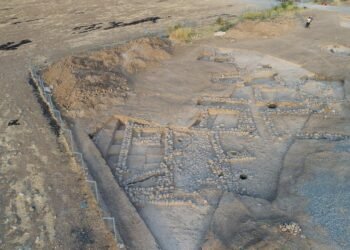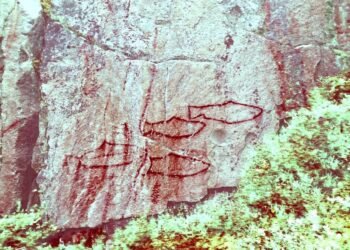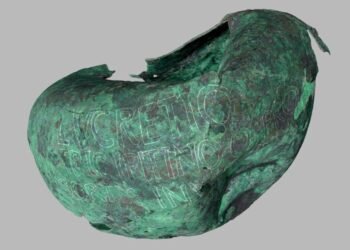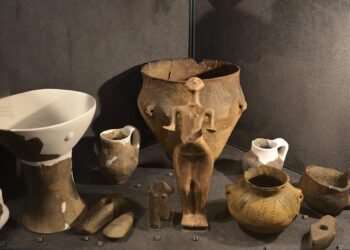A groundbreaking study of the Bedale Hoard, a remarkable Viking Age silver hoard discovered in North Yorkshire in 2012, has yielded evidence of a far-reaching and complex trade network that connected Viking settlers in England with markets as distant as modern-day Iran and Iraq. The find challenges the traditional picture of Vikings as predominantly raiders, highlighting their widespread involvement in long-distance trade.

The research, led by Dr. Jane Kershaw, the Associate Professor of Viking Age Archaeology in the School of Archaeology at the University of Oxford, and carried out in collaboration with the British Geological Survey, analyzed 29 silver ingots and a few of the hoard’s ornate neck-rings. Geochemical analysis, including lead isotope and trace element analysis, identified three primary sources for the silver: Western European coinage, Islamic dirhams, and mixed metal blends from both regions.
While the majority of the silver was likely obtained from Anglo-Saxon and Carolingian coins acquired through ransom or raiding, a considerable percentage—nearly a third of the ingots—was directly traceable to silver minted in the Islamic Caliphate. Those coins, known as dirhams, were minted in regions of modern-day Iran and Iraq and traversed thousands of miles along Scandinavian trade routes known as the Austrvegr (“eastern way”) before reaching England.
According to Dr. Jane Kershaw, the Gad Rausing Associate Professor of Viking Age Archaeology at the School of Archaeology, the Vikings’ image as mere raiders of monasteries is incomplete. Plunder was undoubtedly an important part of their economy, but they were also actively involved in trade networks that extended from Northern Europe to the Islamic Caliphate. “We can now see that they brought large quantities of this Islamic silver with them when they established settlements in England.”

The Bedale Hoard, which also includes an Anglo-Saxon sword pommel, dates to the late ninth or early tenth century. It illustrates the blending of cultures and economies in Viking Age England, between circa 800 and 1150, when wealth in the Scandinavian world was often in bullion form instead of coin. Silver was valued by weight, and foreign coins were frequently melted and recast into standardized ingots or jewelry to circulate in this bullion economy.
One of the most important objects in the hoard—a thick, multi-strand twisted neck-ring—was made from a blend of eastern and western silver, possibly cast in northern England. The study also revealed that Viking metalworkers in Scandinavia and England sometimes refined silver using lead that had been locally sourced, most probably from the North Pennines, demonstrating advanced metalworking skills and local production.

Alongside their military campaigns, the Vikings developed an economic system based on a combination of plunder, tribute, and widespread commercial trade. They connected with networks that extended across Europe, into Central Asia, and far into the Middle East.
The study, published in Archaeometry, adds to growing evidence that Viking wealth was as much a product of foreign trade as plunder. The Bedale Hoard stands as a testament to the Vikings’ position within an interconnected medieval world.























Disclaimer: This website is a science-focused magazine that welcomes both academic and non-academic audiences. Comments are written by users and may include personal opinions or unverified claims. They do not necessarily reflect the views of our editorial team or rely on scientific evidence.
Comment Policy: We kindly ask all commenters to engage respectfully. Comments that contain offensive, insulting, degrading, discriminatory, or racist content will be automatically removed.